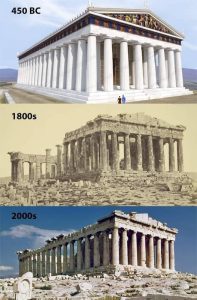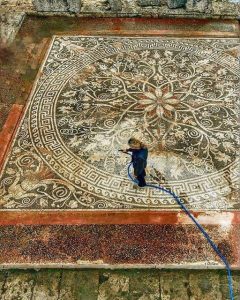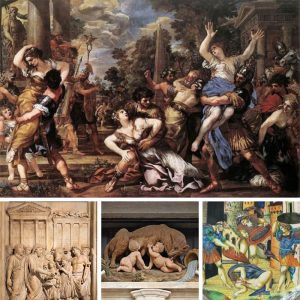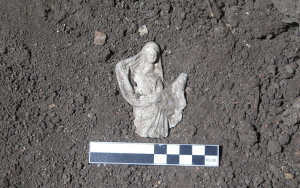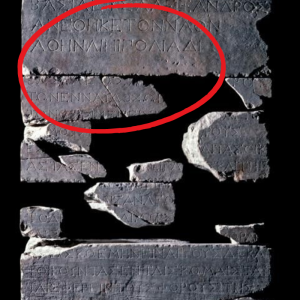Nestled in the rolling hills of Macedonia, Greece, the Palace of Aigai stands as a monument to ancient ambitions and royal legacies. It was in this majestic setting that Alexander the Great was crowned in 336 BC, following the assassination of his father, Philip II. This pivotal moment not only marked the beginning of Alexander’s journey towards building an empire that stretched from Greece to Asia and the Middle East but also highlighted the palace as a central figure in the narrative of ancient history.
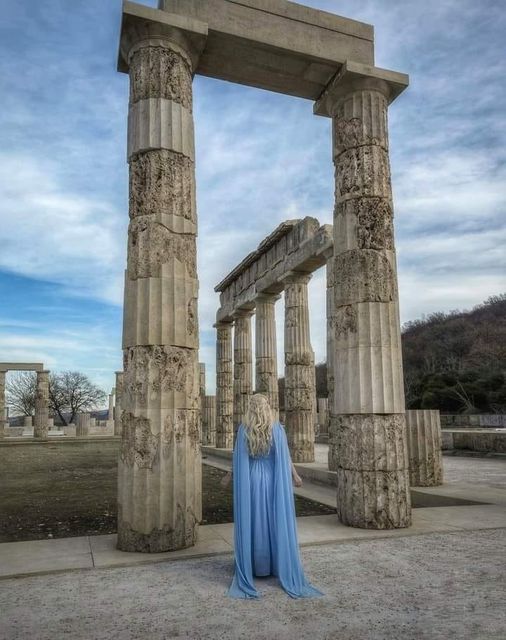
The photograph depicts a lone figure draped in blue, standing amidst the towering columns of the palace. This image captures the essence of the site’s solemn grandeur and the weight of history that permeates its stones. The Palace of Aigai, dating from 359 to 336 BC, was not merely a royal residence but also a cultural and administrative hub that played a crucial role in the governance of Macedonia and the broader Hellenic world.
Architecturally, the Palace of Aigai reflects the classical Greek style, characterized by its Doric columns and careful symmetry, which emphasizes the ideals of harmony and balance. The remnants of this site, particularly the impressive colonnade shown in the image, give us a glimpse into the aesthetic and structural grandeur of the period, designed to reflect the power and prestige of the Macedonian royalty.
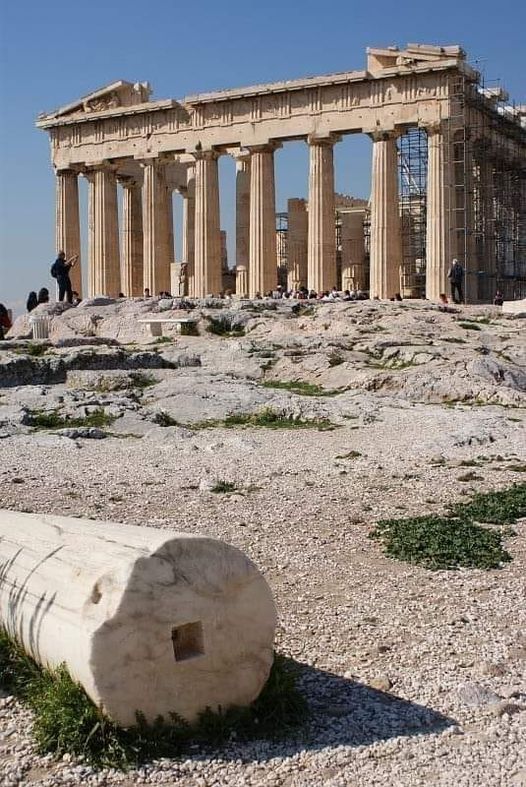
Historically, the palace is significant not only for its association with Alexander but also as a symbol of the era’s political dynamics. It was here that the strategies for expanding the Macedonian empire were likely discussed, and it served as a backdrop for significant political and social gatherings. The palace’s grandeur was meant to impress both locals and visiting dignitaries, projecting the image of a strong and cultured Macedonian state.
Today, the site of the Palace of Aigai is a poignant reminder of Macedonia’s golden age. It offers historians, archaeologists, and visitors alike a rich field of study and reflection. The ongoing excavations at Aigai continue to uncover artifacts and structural elements that provide deeper insights into the daily lives and rituals of those who walked its halls.
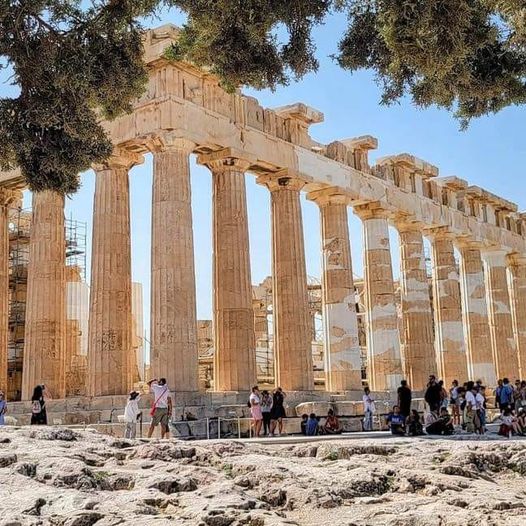
For those visiting the site, it is an opportunity to stand where kings once stood and to feel the echo of history in the quiet of the ruins. The figure in blue, facing the columns, is a powerful representation of how the past continues to resonate in the present, inviting reflection on the rise and fall of empires and the enduring legacy of figures like Alexander the Great.
The Palace of Aigai remains a testament to the historical grandeur of ancient Macedonia and serves as a bridge connecting the modern observer with the rich tapestry of classical antiquity. Its ruins are not just remnants of stone but markers of time, telling stories of power, ambition, and the timeless quest for greatness.
